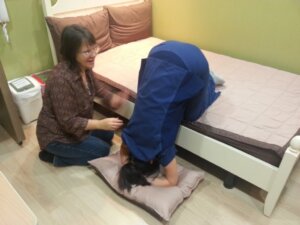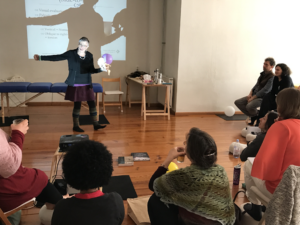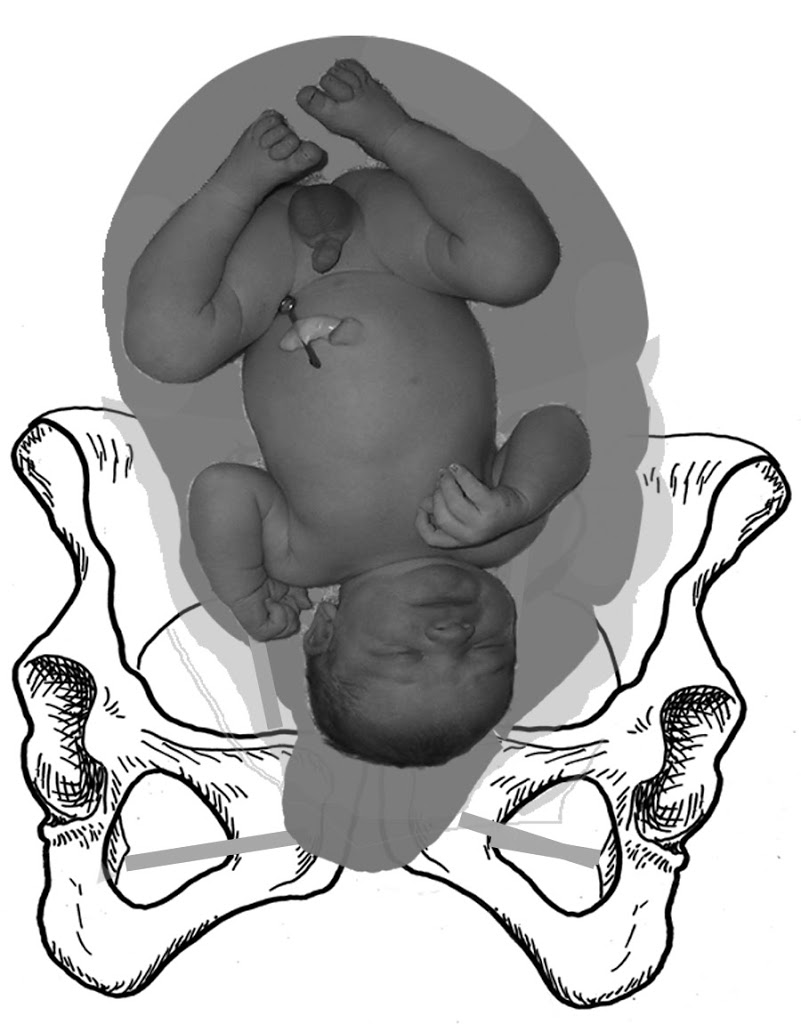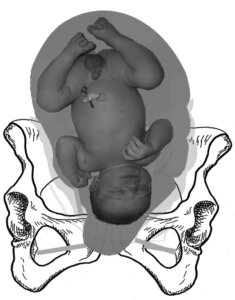When seeking an answer about what to do to protect the normalcy of birth, Spinning Babies asks the question, Where is Baby?
This is because the baby’s position reflects the shape of the uterus. For instance, if the uterus is well positioned, the baby is well positioned.
If the uterus has gotten into a twist, perhaps from a woman playing softball or golf, the baby may be angled above the twist. The uterus might look tipped. It seems like baby is all over on one side sometimes, or perhaps at a diagonal.
The twist will be low in the uterus where the musculature is softer. Cervical ligaments seek to anchor the uterus at and around the level of the cervix. It is about this area that the twist may be the most significant. Car accidents, sports, and sudden stops in gravity when the body is at an angle from the stopping point (the bike hits the curb at an angle rather than straight on).
Dr. Carol Phillips taught me this view of the uterus and Debra McLaughlin is her student who has taken the teaching of this concept to excellence for the providers of birth care.
Spinning Babies happily brings this information forward for the purpose of comfort in pregnancy and ease in birth. But perhaps more important than ease is function. Our bodies function when in “balance.”
Labor pain awakens the brain release of endorphins which prepare the birthing parent for love. The birthing mind becomes the parenting mind. Too much pain is frightening, or rather, fright is inhibitory to a healthy response of instinctual movement. Less fright, more love, but not less pain more love…
Yet labor pain increases unnecessarily, and can even become insufferable in some cases, when the uterus is so far out of alignment with the pelvis that the uterus can’t contract smoothly to bring the baby into and through the pelvis. The uterus pushes the baby against bone in many cases.
I’ve asked doctor friends of mine about cesareans. Did they see a twist in the uterus? One friend said oh, yes, but she saw it in cesareans for failure to progress.
Well, that made my case particularly!
When the uterus is significantly twisted babies weren’t coming through the pelvis. They were lying at funny angles and uterine contractions weren’t able to drop them into the pelvis. In some cases, babies were lying sideways with the uterus twisted around so that the back of the uterus was now in the front of the woman’s body. One uterus had to be untwisted before the cesarean because the ovary was in front. Other twists were discovered only after the surgery because the condition wasn’t as obvious without a structure like an ovary to give the clue.
These are cases in which the doctors found torsion in the uterus. Torsion is also noted in the literature.
Definition of Uterine Torsion
Uterine torsion is defined as rotation of the uterus of more than 45° on its long axis. (Fatih; Nicholson)
Uterine Torsion can be associated with fetal malposition (Pelosi)
What to do about Uterine Torsion?
Body balancing by addressing the soft tissues brings the uterus into alignment. Chiropractic and Osteopathics can help align the pelvis. Together these modalities work the best. Some Chiropractors know the myofascial or fascialtherapy and add it to their protocols.
 |
| Forward Leaning Inversion with head in flexion at a Korean Birth Center. |
Spinning Babies offers the Forward-leaning Inversion, a technique created by Dr. Carol Phillips which allows the weight of the pregnant uterus to hang freely and unwind like an old fashioned telephone ear and mouth piece hanging from a tangled phone cord. This is a self care technique that is quite effective in pregnancy for the baby in a transverse lie, or in labor for the anterior lip and other slow-downs of labor progress.
 |
| Debra McLaughlin teaches how to recognize and undo uterine torsion. |
Debra McLaughlin teaches us to activate the adductors and abductors and correct the symphysis. She is teaching this in a way that a midwife can understand. Learn about aligning the uterus in context this summer to our Spinning Babies community.
Spinning Babies Professional Bodywork Education week in July will move this conversation forward. Chiropractors, Osteopaths, Craniosacral therapists, Fascial Therapist and Therapeutic Massage therapists will love this week. Birth workers are invited but be aware that the teaching is assuming more anatomical awareness than you would learn in midwifery text about the supporting structures. Some of this will be taught but foreknowledge is empowerment. The more you know the more you will learn, let’s put it that way! https://spinningbabiesconference.com/
References
Uterine torsion in second trimester of pregnancy followed by a successful-term pregnancy.
. Uterine torsion in pregnancy. Acta obstetricia et gynecologica Scandinavica, 71(4), 260-265.


